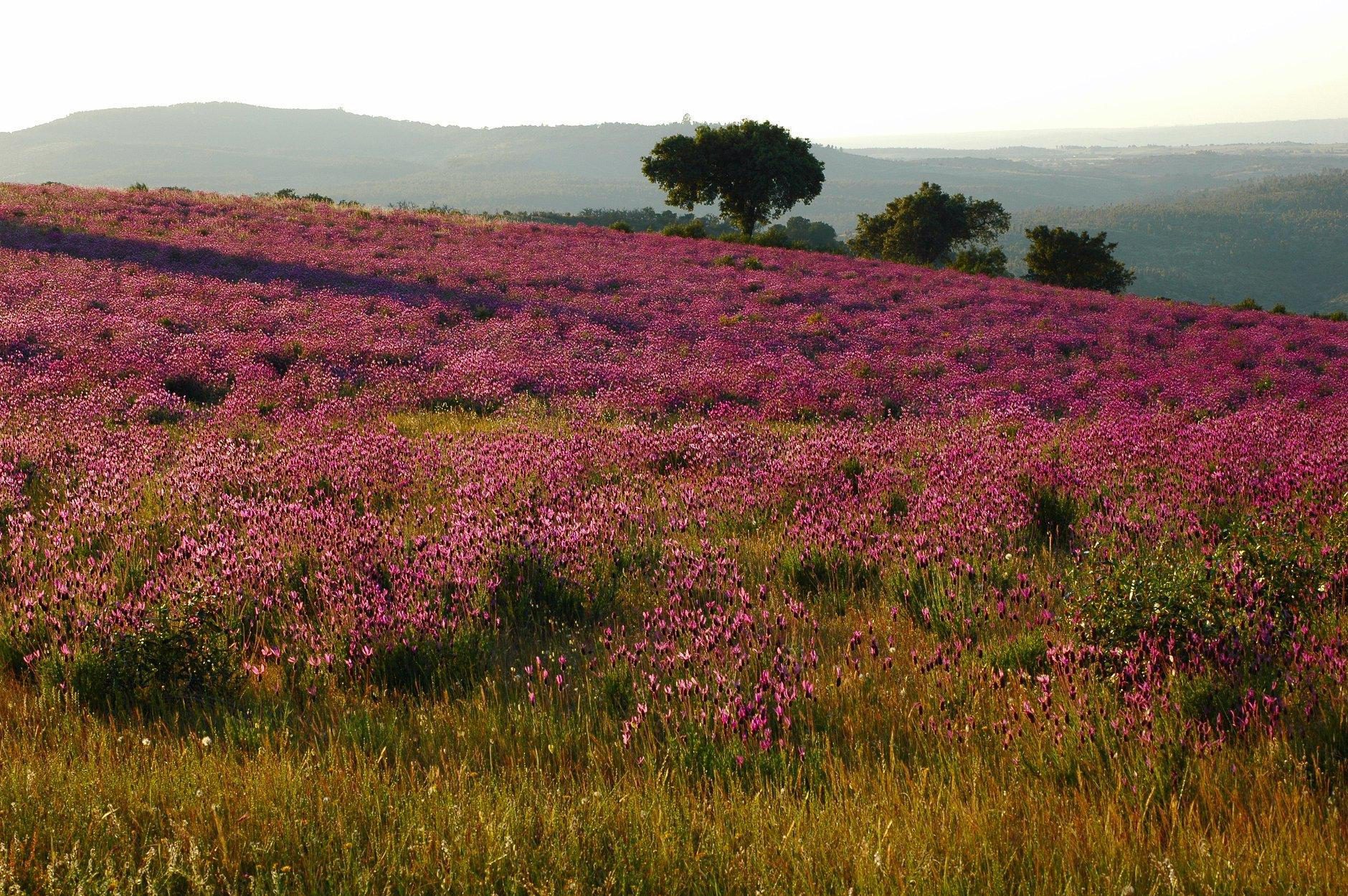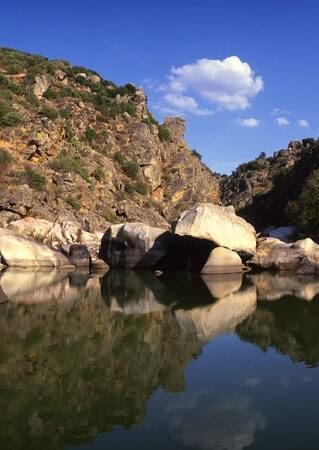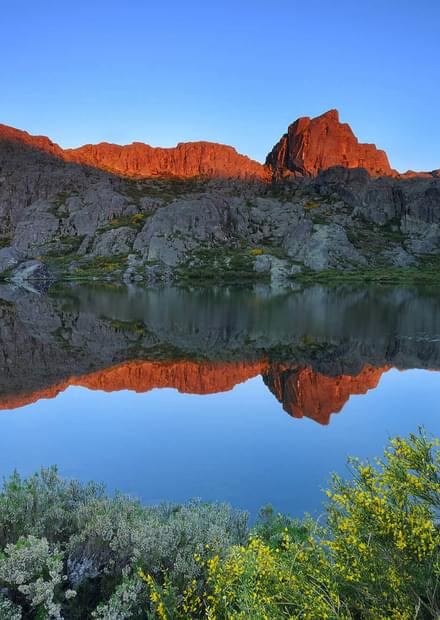Among holm oaks and cork oaks, heather and rosemary, there 154 bird species, 44 mammal species, 15 amphibian species, 20 reptile species, 12 fish species and 153 insect species coexisting in the Tejo Internacional Natural Park area, making it one of the most important protected areas in Portugal.
Here, within the Castelo Branco municipality, where the Tagus River meets Spain, the Natural Park combines the best of Nature with historical and cultural heritage. Traces from the Neolithic and Roman graves live side-by-side with rustic villages where almost no one lives and the landscape integrates harmoniously the popular architecture of local traditional villages which seem to receive it with open arms. Near the Natural Park of Tejo Internacional, visit the fascinating Historical Villages of Monsanto and Idanha-a-Velha or engage in one of the several walking trails available.
Flora & vegetation
The Natural Park of Tejo Internacional is under the climatic influence of the dry to sub-humid mesomediterranean floor, presenting a markedly hot and dry summer.
In bioclimatic terms the Tagus International Natural Park includes two bioclimatic series: the Holm Oak series, Quercus rotundifolia and the Cork Oak series, Quercus suber.
The natural tree cover in this region consists predominantly of holm oak in the middle and upper areas, as well as ash, willow, blackberry and alder in the riparian zones. Due to anthropic intervention, there are also managed areas of trees such as olive groves, eucalyptus and pine forests, as well as holm and cork oak forests.
Holm Oak
Flowering occurs in spring, between February and May. As it is a monoecious species (species that presents female and male flowers separately on the same plant) the male and female flowers grow on the same tree. The male flowers are yellowish, orange and finally turn brownish. They appear in large numbers, grouped in inflorescences - pendulous amentillos - at the end of the year branches.
The female flowers are small, hairy and develop in smaller numbers on the shoots of the year. They grow singly or in groups of two flowers and are reddish, changing to orange with age.
In this territory 726 species of vascular plants belonging to 98 botanical families have been identified to date, 51 of which are endemic.
The Rockrose
From the Cistaceae family, the rockrose is also commonly known as laudanum. The common or common name of a species is by tradition the one by which people know it best and varies according to local culture and region, sometimes the same plant may have different common names or the same common name may be associated with different species.
Black willow
The Black Willow, also known as Blackberry or Ash, is a native species belonging to the Salicaceae family, which includes many other species present in Portugal, such as the Black Poplar, the White Poplar and the White Willow.
Spring time is particularly impressive in this area, when the fields are covered by beautiful flowers of many colours. A magical scent of the power of Mother Nature in the air! This is why the Natural Park of Tejo Internacional is an inspiring place to hear the sound of birds. Or simply the uttermost silence.
Location
Google Maps























